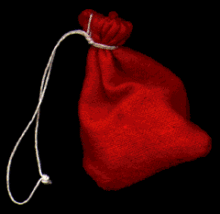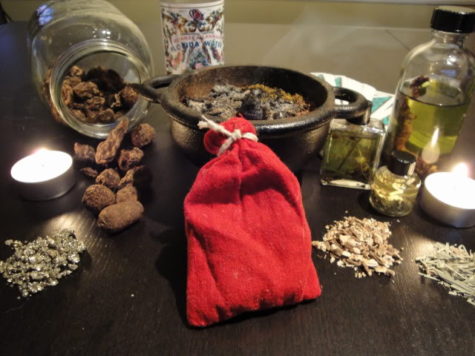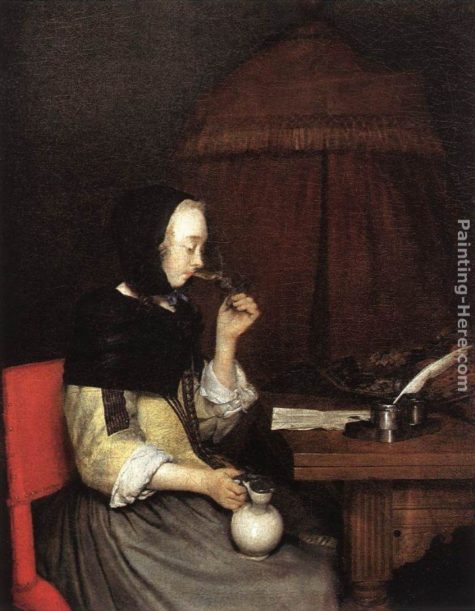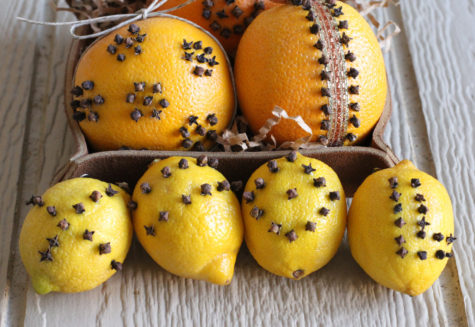Cloves
How Gypsies Became Fortune-tellers
The following is an excerpt from: Gypsy Sorcery and Fortune Telling, a book written in 1891 by Charles Leland, President of the Gypsy Lore Society in London. It’s a bit of a hard read, but I found it interesting, so I’m sharing it here:
As their peculiar perfume is the chief association with spices, so sorcery is allied in every memory to gypsies. And as it has not escaped many poets that there is something more strangely sweet and mysterious in the scent of cloves than in that of flowers, so the attribute of inherited magic power adds to the romance of these picturesque wanderers.
Both the spices and the Romany come from the far East–the fatherland of divination and enchantment. The latter have been traced with tolerable accuracy, If we admit their affinity with the Indian Dom and Domar, back to the threshold of history, or well-nigh into prehistoric times, and in all ages they, or their women, have been engaged, as if by elvish instinct, in selling enchant. merits, peddling prophecies and palmistry, and dealing with the devil generally ill a small retail way.
As it was of old so it is to-day:
Ki shan i Romani– Adoi san’ i chov’hani.
Wherever gypsies go, There the witches are, we know.
It is no great problem ill ethnology or anthropology as to how gypsies became fortune-tellers. We may find a very curious illustration of it in the wren. This is apparently as humble, modest, prosaic little fowl as exists, and as far from mystery and wickedness as an old hen. But the ornithologists of the olden time, and the myth-makers, and the gypsies who lurked and lived in the forest, knew better.
They saw how this bright-eyed, strange little creature in her elvish way slipped in and out of hollow trees and wood shade into sunlight, and anon was gone, no man knew whither, and so they knew that it was an uncanny creature, and told wonderful tales of its deeds in human form, and to-day it is called by gypsies in Germany, as in England, the witch-bird, or more briefly, chorihani, “the witch.”
Just so the gypsies themselves, with their glittering Indian eyes, slipping like the wren in and out of the shadow of the Unknown, and anon away and invisible, won for themselves the name which now they wear.
Wherever Shamanism, or the sorcery which is based on exorcising or commanding spirits, exists, its professors from leading strange lives, or from solitude or wandering, become strange and wild looking. When men have this appearance people associate with it mysterious power.
This is the case in Tartary, Africa, among the Eskimo, Lapps, or Red Indians, with all of whom the sorcerer, voodoo or medaolin, has the eye of the “fascinator,” glittering and cold as that of a serpent. So the gypsies, from the mere fact of being wanderers and out-of-doors livers in wild places, became wild-looking, and when asked if they did not associate with the devils who dwell in the desert places, admitted the soft impeachment, and being further questioned as to whether their friends the devils, fairies, elves, and goblins had not taught them how to tell the future, they pleaded guilty, and finding that it paid well, went to work in their small way to improve their “science,” and particularly their pecuniary resources. It was an easy calling; it required no property or properties, neither capital nor capitol, shiners nor shrines, wherein to work the oracle.
Gypsy Pouches and Mojo Bags
 Magickal pouches are found universally. Australian aboriginals, Amerindian shamans, Voodoo Bokos, African medicine men, European wisewomen – all employ pouches stuffed with various ingredients that they feel bring health, wealth, luck (good or bad), and/or protection. They may be called wanga, gris-gris, mojo bags, or whatever.
Magickal pouches are found universally. Australian aboriginals, Amerindian shamans, Voodoo Bokos, African medicine men, European wisewomen – all employ pouches stuffed with various ingredients that they feel bring health, wealth, luck (good or bad), and/or protection. They may be called wanga, gris-gris, mojo bags, or whatever.
The Gypsies, too, make and carry such items. Depending on the purpose, so do the contents vary. The name for a Gypsy pouch is “putsi,” the real meaning of which is “pocket.”
For love, the Romanis make little bags of red silk, which they fill with rose petals, acorns, a piece of amber, cinnamon, two cloves, a bean, a piece of orris root, and a silver or gold coin. This is worn next to the skin. Occasionally they use small chamois leather pouches rather than silk.
Some Gypsies also include such items as a small bird’s feather, a piece of lemon peel, lavender, a wedding ring (perhaps the mother’s or grandmother’s), and a small piece of coal. Many Gypsies have two pouches. One is the silk one, which hangs around their neck, and the other is the leather putsi, which they hang from their belt. Into this second one it is easy to slip any new item that is spotted and recognized to be of value. I do this myself. Always keep your eyes open … you never know when you might spot something that could be a very powerful amulet.
Gypsy Cures for Coughs and Colds
 The Romany culture was rich in cures for coughs and cold. Some suited one, and some suited another. Here are some authentic Gypsy cures for the common cold. (As always, use common sense when trying the remedies, and consult your doctor if you are seriously ill. Remember these cures are from times long past.)
The Romany culture was rich in cures for coughs and cold. Some suited one, and some suited another. Here are some authentic Gypsy cures for the common cold. (As always, use common sense when trying the remedies, and consult your doctor if you are seriously ill. Remember these cures are from times long past.)
First, some of the simplest remedies which are easy to try. Did you know, for instance, that the vinegar from a jar of pickled walnuts is a very good gargle for sore throats? Do not throw it away, keep it in an airtight jar until it is needed. If you have a hard cough, beat the white of an egg to a froth, then add a tablespoonful each of vinegar and sugar. Drink this at bedtime, and the cough will not trouble you during the night.
If you have a dry cold, drink peppermint tea and it will almost immediately ease your symptoms. And if your friends are scared of catching it from you, or you wish to keep your family free from infection, tell them to rub a little peppermint oil under the nose and round the throat, and to take a small dose as well, it is an antiseptic and a strong preventative of disease.
Try drinking a glass of hot milk at night with a crushed clove of garlic in it. This is very good for both coughs and colds, and will give some relief asthma sufferers.
Horseradish is another good remedy for sore throats and coughs-even whooping cough. Scrape a half a teacupful of horseradish, add a little vinegar to thoroughly soak it. Keep pressing it down so that the horseradish is always just covered by the vinegar. Leave for the day. Then add one tablespoonful of glycerin and mix. take a half of a teaspoonful in a wineglass of hot water. Incidentally, horseradish will also help to alleviate that annoying catarrhal deafness that can come with a cold. Take one ounce of the grated root, pour one pint of boiling water over it and let it stand for 15 minutes. Strain, and take 4 tablespoonfuls twice a day. If you don`t like the flavor, mix it with syrup of ginger or caraway.
If you want to stop a cold in the early stages, make an infusion of the herb basil in the proportion of 1 teaspoonful of the dried herb to 1 cupful of boiling water. This will promote perspiration and drive out the cold.
If you have access to an elderberry tree, its berries and flowers will quickly help to dispel your discomfort. Store elderflowers after drying them out in the sun, and you can make a healing beverage at any time by pouring boiling water over them and adding a little sugar. The Romanies claim that it puts paid to a head cold if taken immediately the first signs are noticed. This infusion is also soothing and will help to give a good night`s sleep. It will also calm the nerves.
For more Elderberry remedies for colds and flu check out the following at Folk Medicine Remedies and Cures:
The Romanies also found Borage a very good plant for medicinal purposes. An infusion helps coughs, a poultice of Borage leaves is good for inflammation, and if you are suffering from the slight fever that sometimes accompanies a cold or flu germ, put a sliced lemon and about six sprigs of the herb in a jug and cover with boiling water. Drink when cold, it will reduce the feverish symptoms.
Another cold preventative is feverfew. Make the leaves into a tea and it will not only guard against colds, but also flatulence and hysteria.
If you stew barberry berries with a little water until they are soft, then squeeze them through a strainer, pressing out all the juice with a wooden spoon and add three pints of water to one of juice, you will have an excellent drink which, if taken hot at night, will induce the perspiration that drives out a cold
If you are not sure whether it`s a cold or flu coming on, don`t hesitate, infuse 1 oz of fresh or dried balm with a pint of boiling water and take it very hot, last thing at night. It will drive out a cold and arrest an attack of influenza – but you should take it in good time when you feel the first symptoms coming.
Red clover is one of Nature`s best remedies for sore throats and chest troubles. It will also help a bad cough that sometimes accompanies a cold. It grows in fields and by waysides up to a foot in height, and even larger when cultivated. As an infusion it is good for sufferers with bronchitis and asthma. For a bad cough, prepare this syrup. Make a syrup of loaf sugar and water, add fresh red clover leaves in the proportion of an ounce to a pint of syrup. Boil and strain, Bottle and cork the bottle tightly, and take a teaspoonful twice or three times a day.
Ground ivy is a plant that grows on waste ground and in hedgerows everywhere, the leaves are dark and kidney shaped and the flowers bright dark blue. The Romanies made a tea from ground ivy flowers and wood sage as a cure for fevers and colds. The herb is used by herbalists in the treatment of blood and kidney disorders.
In Victorian times, children ate horehound candy as a cure for sore throats and coughs. The plant has a vine-like scent. It is a good remedy for diseases of the chest and lungs and has the added advantage of being a good tonic. If your cold brings on bronchitis, make a brew of horehound tea and you will find that a wine glassful three times a day is a great relief. If you mix it with a little honey, it is more pleasant to take. Black horehound is not used much in herbal practice, but it was once used as a tonic tea by country workers. Horehound, in fact, is often used by herbalists as a remedy when combined with hyssop.
Oil of hyssop is sweet scented and used in the making of some eau de colognes. It was also used by the monks when they made Chartreuse Liqueur.The plant originated in Italy, but can easily be grown in English gardens and it is a very useful plant to have handy as it is a good remedy for coughs and lung complaints. Make an infusion of 1 oz of leaves to 1 pint of water and take frequently.
Comfrey is a well known remedy for lung disorders. Put half an ounce of the crushed root in a saucepan with a pint and a half of milk and water mixed in equal parts and simmer for 20 minutes. A wine glassful will quickly ease an irritating cough. If you use only one pint of milk and water mixture the remedy will form into a jelly which also eases coughs. Grow comfrey in your garden, the root can be boiled as a vegetable and the young shoots blanched and cooked like celery.
The coltsfoot is another wonderful remedy for coughs and colds, whooping cough and shortness of breath. It has a little yellow flower that smells of honey and blooms in February, long before the leaves which grow to enormous size. Coltsfoot grows nearly everywhere, on rubble heaps, by the side of newly-made roads, on railway banks and on coal mine tips. In fact there is a very old gypsy saying that wherever coltsfoot grows freely, coal will be found. Once it was so revered in France that a painting of a coltsfoot flower appeared on the doors of all doctors as a sign that the art of healing was practiced there. The Romanies praise this herb very highly.
A decoction of the leaves of the herb coltsfoot to a pint of boiling water is very good for colds, coughs and asthma. If you haven`t time to make a decoction when a cough is bad, use an infusion of coltsfoot and take in teacupful dose.It can be sweetened to taste with honey.
Another old Romany recipe to soothe any cough is made with liquorice root, coltsfoot and lemon. Simmer 1 oz of liquorice root in 3 pints of water till it is reduced to 1 pint. Put 1 oz of coltsfoot and a sliced lemon into a jug and add the decoction. Stir well, sweeten with honey,allow to get cold, then drink as required.
If you have the hacking cough of a heavy smoker this remedy will disguise your weakness. Put two ounces of sunflower seeds into a saucepan with a quart of water, and an inch or so of whole ginger. Simmer until reduced to a pint and a half. Add sugar or honey to taste. When cold, strain. A tablespoon of whisky will help the drink to stay fresh; if it is not added, it should be made fresh every two or three days. This is an excellent decoction to relieve bronchitis or a hacking cough.
Disclaimer: The author of this site is not Doctor or medical certified professional, the information presented here is for informational purposes only and should not be taken as medical advice.
Make A Gypsy Mojo Bag
A Parik-til is the Gypsy version of a medicine or mojo bag. To create a parik-til, a small drawstring pouch is made in the appropriate color for the intended purpose. Into this goes various little objects: herbs, stones, feathers, sometimes a charm or piece of paper inscribed with a simple spell. This list is endless; it is only important that the objects seem sympathetic to your purpose.
Collect leaves and twigs of the oak tree, including a small acorn if available, the petals and/or seeds of the sunflower, a piece of cinnamon stick, three cloves, a stone that feels lucky for you, a horseshoe charm if you can find one – or a small picture or hand drawn symbol to represent a horse shoe, and a little trinket such as a bit of jewelry or a coin.
Feel free to add anything else that seems relevant, or meaningful to you. Tie the oak leaves and twigs with a bit of green yellow and orange thread. Put all the items into a drawstring bag. Perfume with an essential oil such as Myrrh, Benzoin, Cinnamon, or Patchouli, or dab with prosperity oil.
Hold the bag in your hands and feel the energy contained within. Parik-til means blessing holder, the objects inside the bag are symbols of the blessings you are holding. Take a few minutes to allow yourself to really feel it.
If you have never made a simple drawstring bag, they are super easy, and you can find hundreds of tutorials online, or you can check out my less than artistic rendition of how to make a drawstring pouch in about 5 minutes using a handkerchief, a ribbon, and a needle and thread. Here’s the link: How To Make A Simple Mojo Bag
Adapted from: Gypsy Magic by Patrinella Cooper
An Old Gypsy Cure for Nervousness
Valerian Wine
- 2 handful valerian roots
- 1 clove
- 1 orange rind
- 1 rosemary twig
- 1 liter of dry white wine
Drink 1 liqueur glass three times daily. Also good for fainting.
Source: Unknown
To Remove Misfortune
According to the Romanies, extricating yourself or someone you care for from a streak of bad luck and misfortune is not difficult.
Take three small jars and nine garlic cloves, and a number of thorns from a white rose. Stick the thorns into the garlic cloves and place three cloves in each jar.
Each jar should be buried within sight of a church porch while you say the Lord’s Prayer.
Note: Best done under the light of a full moon.
From The Good Spell Book
Gypsy Spell For Good Fortune
To encourage Good fortune, on Midsummer Night’s Eve take an orange, to represent the sun, and a lemon, which symbolizes the moon. Press cloves (representing brown wooden nails) into the skin of the fruit. The cloves purge any misfortune that the first have of the year may have brought and ensure that the second half of the year will be trouble free.
From: The Good Spell Book







